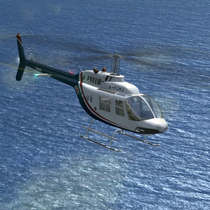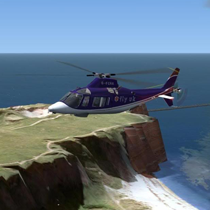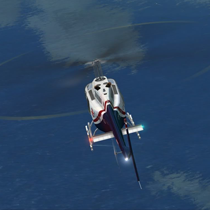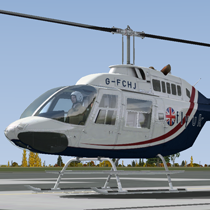Get Started - Flying Helicopters
Yes, it's true they are different to fly than fixed-wing aircraft. It has been said that helicopters in FS are impossible to fly but this is a myth. With the correct simple FS set-up of controls and PC seating arrangements and a little patience, any difficulty disappears and gradually, with practice, the helicopter can be flown in FS with competence.
Any guidance/tips on how to accomplish this skill or demonstrations how to achieve flying these 'extraordinary' aircraft can be provided by our helpful flying club members which can be contacted on Teamspeak every Wednesday night from 1800z.






Simulation vs. Reality
What to expect
If you are using FS9 or FSX you'll be training in what is probably the most advanced consumer-available simulation software. However there are some limitations to simulation, especially in regards to helicopter flight which you should be aware of before starting the exercises. When you hear new flyers stating that the helicopter in MSFS can't be flown, it is usually because they have the wrong type of controls, or they have not learned to overcome one or more of the following factors:
Lack of physical sensations
You won't be able to feel small changes in motion. You also won't be able to sense your speed or altitude as clearly as you would in real flight. When it comes to helicopters, these sensations are very important, especially at lower speeds and altitudes. Without these physical cues, our situational awareness will be challenged. It will place greater importance on the few cues the simulator does provide, and the instruments that tell us things our bodies can't feel.
Lack of peripheral vision
Yes there are virtual cockpits with point-of-view joystick controls. There are also multiple views that can be used within the 2d cockpit mode. However, these can't come close to the real life ability to take a quick look out of the corners of your eye. This means most of the time, you'll be getting your visual cues from the forward view of the 2d or virtual cockpit. Surprisingly, with a little practice and experience, you'll find the simulator will give you quite a lot of information about the situation of your aircraft in this view. The cues are small, but can be used effectively once you begin to recognize them.
How a helicopter flies
We are going to skip all of the clichés and analogies often used to describe how a helicopter flies, or how they behave in relation to fixed wing counterparts. We will start by saying that Helicopters are undoubtedly the most complex flying machines ever created...period. Helicopters have amazing and unique flying capabilities, but they come at a price of mechanical complexity, fuel inefficiency, reliability, and maintainability. It is best when learning how a helicopter flies, to treat the helicopter as a unique flying machine, and NOT as a derivative of the fixed wing aircraft.
After understanding some of the basic principles behind helicopter flight, you'll hopefully have a new appreciation for how these wonderful machines work







